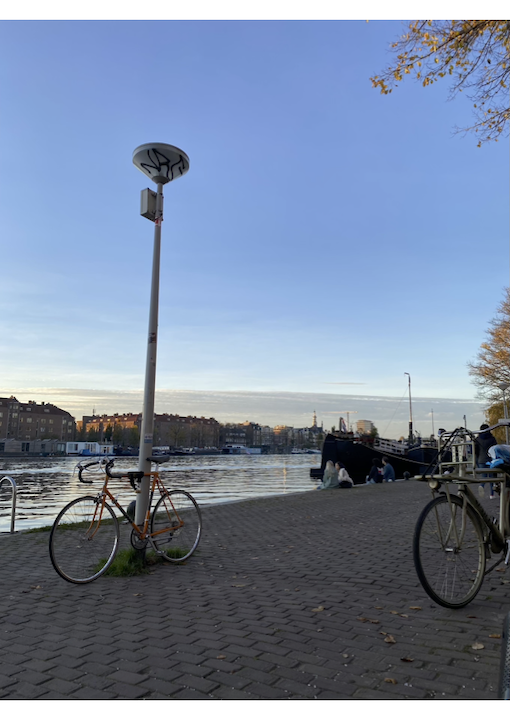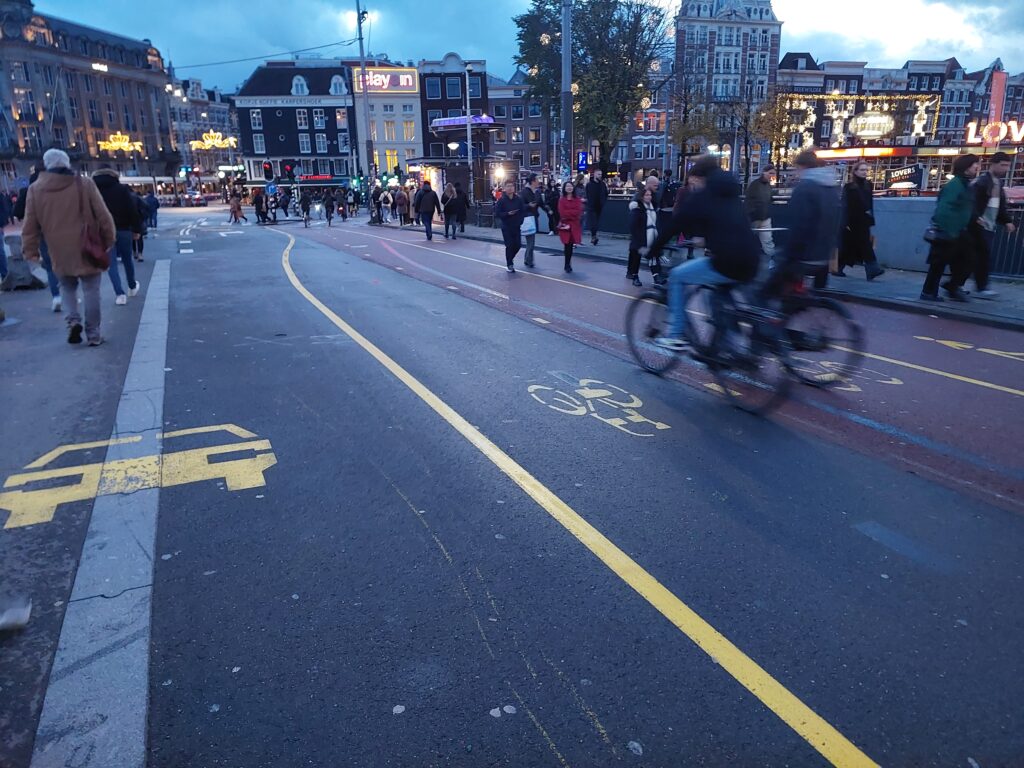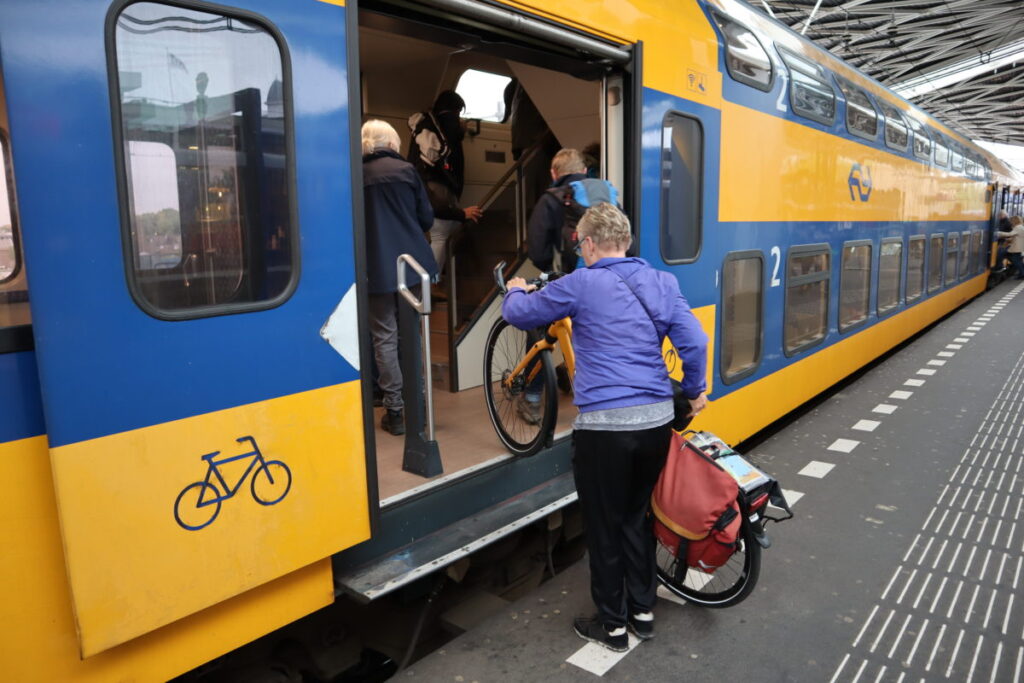Mark PHILPOTTS | LinkedIn
Selected final essay, published 18 July 2020
Mark is a chartered civil engineer with over 25 years of experience working in highway engineering. He is a walking and cycling design specialist with Sweco UK Ltd. He is also an advocate for designing for utility cycling and often explores the dynamics of the subject from the saddle of his Christiania cargotrike!
Unraveling the Cycling City MOOC on Coursera
“Culture” is perhaps an abstract idea for those engineers mostinterested in how the elements of astreet fit together within a city to enable people to cycle. In many ways the idea of culture vs infrastructure is the classic chicken and egg story, but a greater knowledge of how cycling culture develops with infrastructure allows both to become positively reinforcing. Where there is excellent infrastructure, cultural considerations can also help us develop innovative ways in taking the infrastructure even further. Forsyth and Krizek (2011) propose that “cyclists have needs from the standpoint of urban design that substantially differ from pedestrians, motorists or transit users.” It’s an obvious point, but in the UK we often take the approach of “bolting” cycling infrastructure onto that designed for driving or walking and then wondering why most people don’t use it. Further into the paper there is a discussion around whether dedicated cycling infrastructure is safe:
“[S]eparated cycle paths havebeen controversial as the research evidence, on balance, finds that they increase accidents where they intersect with roads” (which leads us to “Don’t give up at the intersections”)… On the other hand, most cyclists are unaware of such research and perceive dedicated facilities as safer (meaning that such paths may encourage people to cycle, and places where many people cycle tend to be safer places.
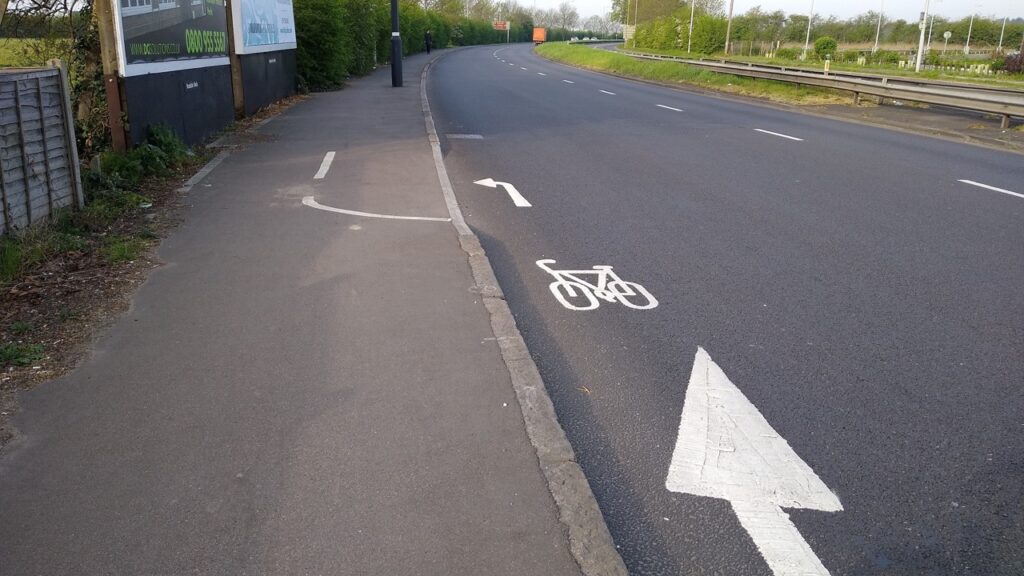
People cycling are first expected to be cycling on a 50mph dual carriageway and then to switch to a shared-use path. Cycling bolted onto driving or walking infrastructure.
In the UK Department for Transport’s National Travel Attitudes Survey (2019), 61% of people say that it’s too dangerous to cycle on the roads, so we are faced with the reality that people won’t cycle unless they feel safe and that means developing infrastructure. However, this is not enough to get people cycling because we need to develop networks to enable people to go where they need to go, yet the UK remains largely obsessed with building routes which only serve people with origins and destinations along them.
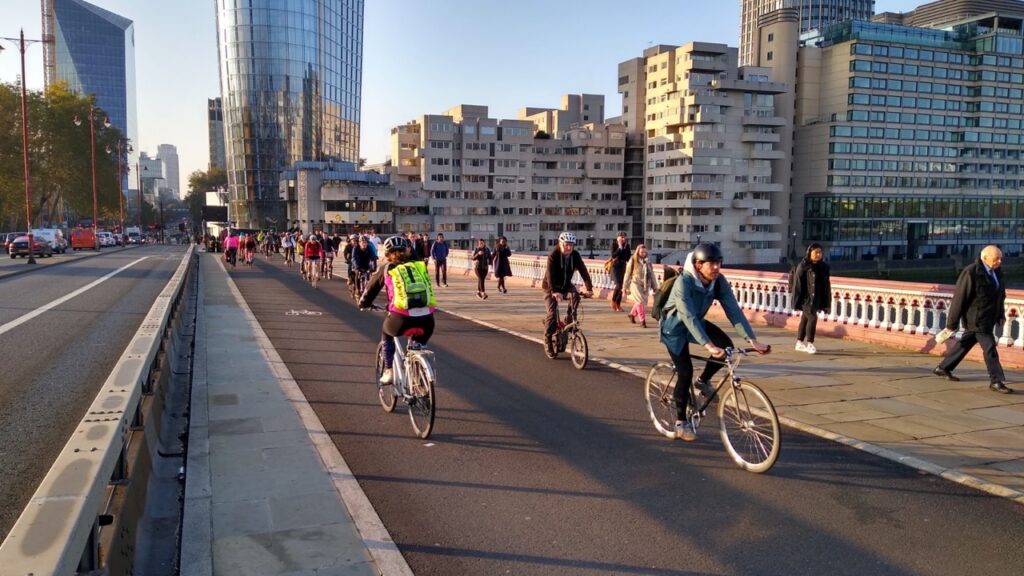
London Cycleway 6 provides a north-south route in Central London. It’s rare for the UK, but it does connect with other cycle routes to form a nascent Central London network.
Meredith Glaser’s article in the Guardian takes us to a position where there are well-developed cycling networks which are no longer coping with demand and how infrastructure needs to be adapted by removing administrative control to deliver a more efficient system which still feels safe to all users. Switching off the traffic signals at the Alexanderplein junction made professionals nervous, but after a period of adjustment, users were happier about the new arrangements than before especially because they found the operation of the junction frustrating before the traffic signals were switched off. The changes are at the latter end of a trajectory in Amsterdam whereby infrastructure was built to accommodate cycle traffic; general traffic has since been reduced; and now cycling dominates to the point where there are enough people cycling to enable the junction to operate safely and efficiently at the human scale where drivers are genuinely guests.Of course, Amsterdam has a 70% cycling mode share in the city centre and so it’s natural for my engineering brain to wonder what the threshold might be for moving from administrative control at a junction to letting people decide how to behave. In fact, it won’t be a threshold, it will be a spectrum and it leads to more questions:
- Is there a golden ratio of cycle traffic flow to motor traffic flow?
- Are there network preconditions to be met to ensure low levels of motor traffic?
- How developed does the cycling network have to be to enable the transition?
To bring this full circle, Pucher and Buehler (2008) compare European nations to see why some are successful. From Tables 1 and 2, they develop a list of common conditions. Amsterdam and my home city London share many of these conditions, but the difference is that Amsterdam has them uniformly deployed, including the infrastructural elements:
- Extensive systems of separate cycling facilities
- Intersection modifications and priority traffic signals
- Traffic calming
- Bike parking
This leaves me with a fundamental question for the UK:
Can we apply infrastructure development to deliver high cycling mode shares in the UK in a way where we don’t have to change it when cycling demand exceeds capacity -is this even possible, or are we destined to update our streets on an iterative basis?
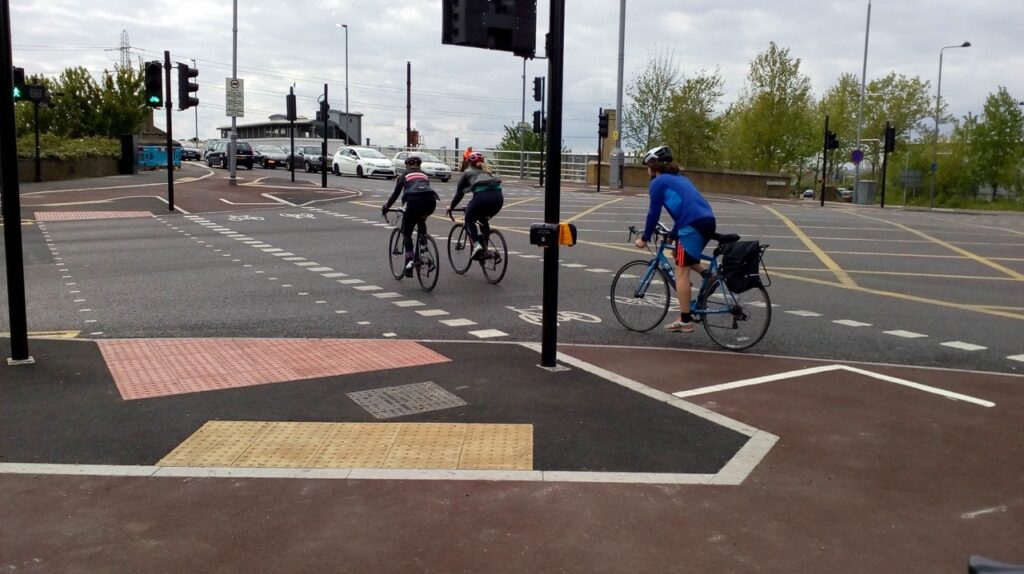
The first “Dutch Style” protected signalised crossroads in London. The local borough, Waltham Forest, has reallocated road space and signal time to walking and cycling. The junction is part of a local network and it is already growing cycling. Will it have enough capacity long term?
There are certainly lessons we can apply from current thinking which could allow us to miss out early iterations, but the UK must surely have to develop cycling networks before we have the “nice to have” problem of needing to adapt them. Perhaps there is a hybrid solution which brings in the fascinating idea of pattern language , which is a convenient way to describe a solution to a complex problem, such as DELTA JUNCTIONS which describes a wide stop line for cycle traffic at a junction which narrows on the exit as people merge. Thisprovides us with a way of bringing in pragmatism and adaptability into the design process far earlier, especially where we need to develop some non-standard solutions to our problems. Maybe it’s in those concepts which are perhaps more abstract than I am used to is where we’ll find the culture; or at least the parts that engineering cannot build.
Photos in this Essay by Mark PHILPOTTS

